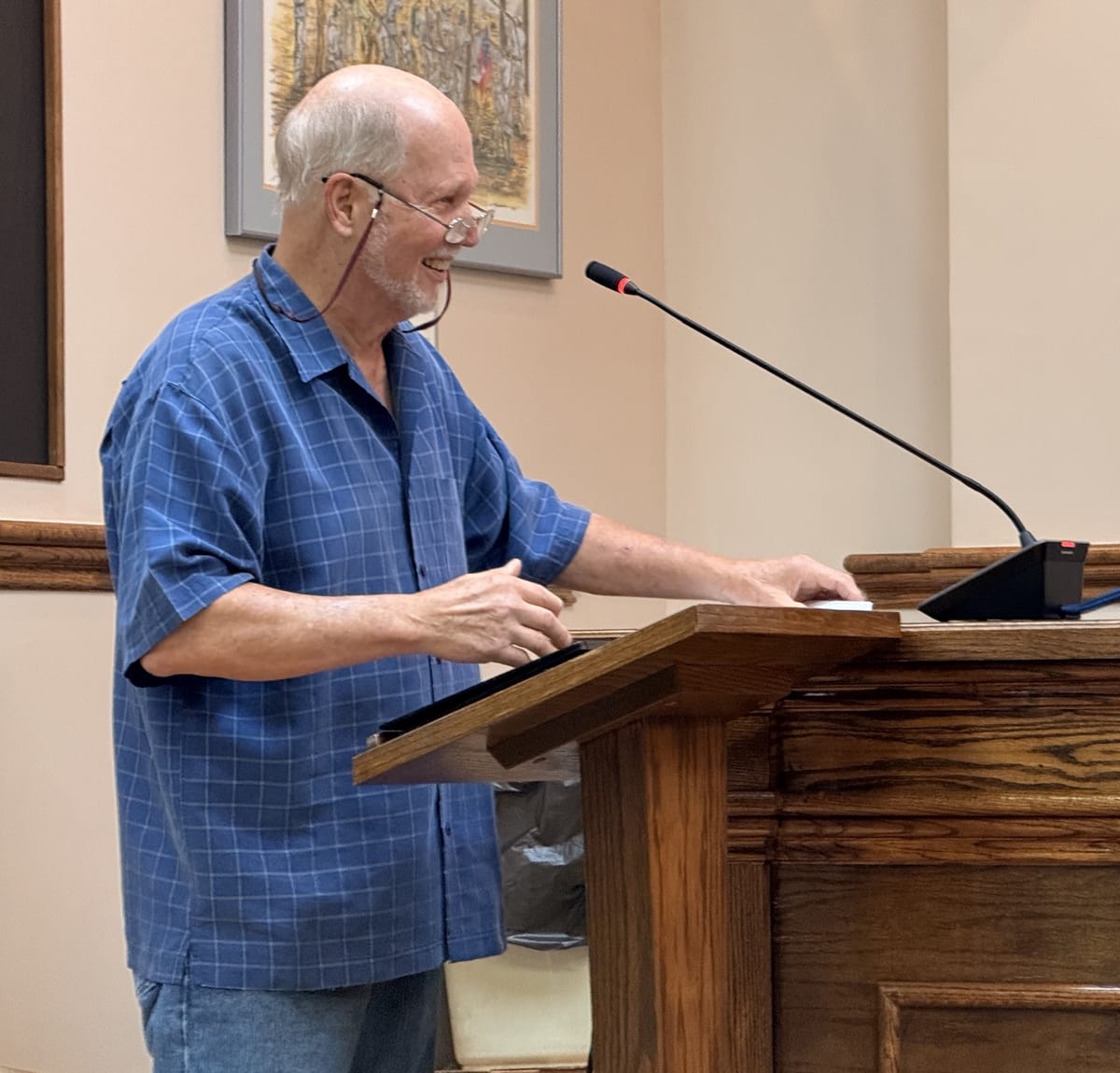Nerve gas contaminated warheads 'will be destroyed by November'
Plus, Blue Grass Army Depot chemical weapons plant to be demolished next summer

BEREA—A safer era for Madison County and the region is just three months away, according to the governor’s top man for overseeing the destruction of chemical weapons previously stored at the Blue Grass Army Depot.
Craig Williams, a Berea resident and Vietnam veteran, has been leading the way to decommission the toxic gasses for the past 40 years after he learned they were to be disposed of dangerously.
“The Army was going to incinerate them. Obviously, that was a bad idea,” Williams told The Edge in a sideline interview at the first regularly scheduled Berea City Council meeting of August.
The decommissioning of these weapons was federally declared 100 percent complete in July of 2023. The declaration referred to actual weapons, according to Williams, who told The Edge that the remaining materials are not explosive, and so were not included in the terms of the decommissioning.
“There already are no chemical weapons in Kentucky. There are chemical warfare agent-contaminated weapon components that are being destroyed now,” Williams said.
Nerve gas contamination
During his presentation, which included multiple slides, Williams told Council that as of August 4, more than 89 percent of the 17,739 warheads containing residual amounts of nerve agent VX have been destroyed. In the past two months alone, Williams said more than 2,400 of these contaminated warheads were destroyed.
Contaminated warheads containing residual amounts of nerve agent GB have been 98 percent destroyed, Williams said, adding that in June and July of this year, 5,500 of these warheads were destroyed.
In the past year, the decommissioning project’s recordable safety incident rate was 0.16, and that as of June 30, 17,122,130 hours and 2,117 days have been completed on the project without a lost-time accident, according to Williams.
“Every time I go out there, I am always impressed that these folks have gotten rid of all these chemical weapons without any serious incidents. It’s a remarkable accomplishment,” Williams told the Council.
Many other necessary infrastructure changes have been made to prepare for the demolition of the main chemical plant at the Depot, scheduled for summer 2026, according to Williams.
Chips from the concrete “igloos” (concrete bunkers) that housed the chemical weapons are now being analyzed, Williams said, and the environmental team on the project awaits the results. The entire warhead destruction portion of the project is now slated for completion by November of this year, he said.
“We’ve been working on this project for 40 years. It never ceases to amaze me how many agencies and procedures you have to go through in order to get one item checked off the list,” Williams told Council. “However, they are making extremely good progress.”
Job losses
A reduction in force at the Depot has been tied to project milestones, according to Williams, who said that at one time there had been 1,460 employees, but the drawdown now leaves just over 900 workers there. Another 200 employees are scheduled to be laid off now through the fall, Williams said. There has been a 57 percent placement rate of BGAD workers into roles elsewhere, once their work at the Depot was complete, according to Williams.
A job fair for displaced Depot workers will be held by Bechtel Parsons Bluegrass at the Madison County Fairgrounds on Tuesday, August 12. Participating companies include Enersys, Hyster Yale, Georgetown Municipal Water & Sewer, Qualex, and others, Williams said.
Economic impact
Since the decommissioning began in the mid-80’s, Williams said the economic impact has been significant. Half of the project is staffed with local hires, he said. Also, well over 200 million dollars have been spent with Kentucky companies, with more than half of that spent in Madison County, according to Williams. Over 1.4 billion dollars in payroll have been paid to local workers, he said.
McConnell involved
Williams also told The Edge that Kentucky’s retiring US Senator, Mitch McConnell (R.), was instrumental to the safety mission. “He was the spearhead on the political side of things,” Williams said, noting that there were many others who also helped ensure the weapons were disposed of in a manner not harmful to residents. Williams said McConnell got involved directly in 1996.
“Once he understood our position on the technology [that could help destroy the weapons safely], and we demonstrated to him that not only were we advocating that, but there was a broad section of scientific engineering and environmental scrutiny being given to what [the Army] proposed to do, and he realized that that was not safe for anybody, then he helped us out,” Williams said.
Gratitude
“I appreciate everyone taking the time to listen, and I anticipate probably one or two more presentations as time goes on. Then I will bid a fond farewell to chemical weapons and my role in it, and I will be joyously working in my garden instead of making slides for y’all,” Williams concluded.
Councilmember John Payne commended Williams.
“I just want to say thank you,” Payne said. “It’s been a decades-long endeavor to remove these toxic materials from Madison County, and I think we all feel a little bit safer for it.”
“I know I do,” Williams said.
If you want to know what important things are happening in Berea and Madison County, you need The Edge. Become a paid subscriber.
Disclosure: Williams serves on the Advisory Board of The Edge.
